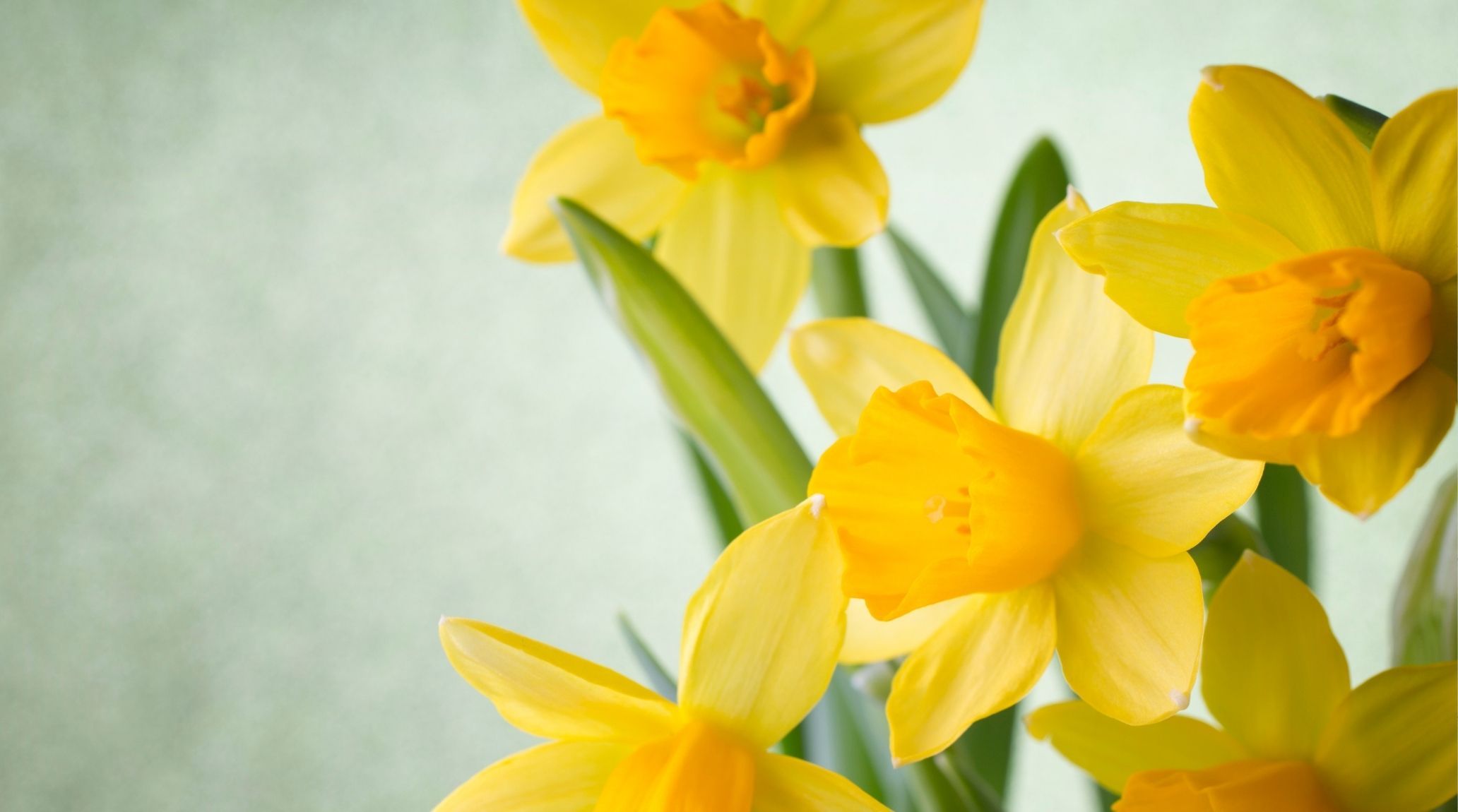
“
Daffodils are more than just beautiful flowers that signal the arrival of spring; they are fascinating plants with a rich history and a host of intriguing characteristics. From their ancient Greek origins to their natural pest-repellent properties, daffodils captivate young gardeners and nature enthusiasts alike. In this blog, we will delve into 20 fascinating daffodil facts, each designed to spark curiosity and foster a love of learning about the natural world. Join us as we scrutinize these cheerful blooms and uncover their many secrets.1
1
”
Daffodils can bloom for anywhere from six weeks to six months, depending on the growing conditions. Factors such as climate, soil quality, and care will influence the length of their flowering period, making them quite versatile in gardens. 1
Squirrels avoid daffodils because of their poisonous crystals, which deter them from eating the flowers. However, it's important to keep daffodils away from dogs, as these crystals can be harmful if ingested by pets. 2
Daffodils are the birth flower for March, symbolizing new beginnings and rebirth. Their bright yellow blooms are a cheerful sign of spring, often associated with renewal and hope, making them a meaningful gift for March birthdays. 3
In 1979, a daffodil grown by M. Lowe in Chessell, Isle of Wight, UK, reached an impressive height of 1.55 meters (5 feet 1 inch), setting a remarkable record for daffodils. 4
There are over 50 species of daffodils and thousands of hybrids, each with unique colors and shapes. This diversity allows gardeners to choose from a wide array of blooms to brighten their gardens. 5

While typically yellow, daffodils can also be white, orange, pink, or a combination of these colors. Their vibrant hues make them stand out in any garden and add a splash of color to the landscape.
Daffodils contain a toxic substance called lycorine, making them poisonous if ingested. This toxicity helps protect them from being eaten by animals, ensuring their survival in the wild. 6
The toxins in daffodils also make them a natural deterrent for pests like squirrels and deer. Gardeners appreciate this natural defense mechanism, as it helps keep their gardens safe from unwanted visitors.7
Daffodils grow from bulbs, which store all the nutrients needed for the plant to survive through winter and bloom in spring. This bulb makes them hardy and reliable bloomers year after year.8
Daffodil bulbs can live and bloom for decades, sometimes even outliving the gardeners who plant them. They are a true investment in a garden's future, providing beauty for many years. 9
These flowers are low-maintenance and can thrive in many different soil types and climates. Their resilience makes them a favorite among gardeners, as they require minimal care. 10

In Wales, the daffodil is a national symbol and is worn on St. David's Day on March 1st. This tradition showcases the cultural importance of the flower and its place in Welsh heritage.
Daffodil seeds require up to five years to mature into a flowering plant, making their cultivation a long-term endeavor. This slow growth process demands patience from gardeners, but it can result in beautiful, unique blooms over time. 11
Daffodils produce a sap that can be toxic to other plants. This sap can inhibit growth or cause damage if it comes into contact with them, making it important to plant daffodils separately to avoid harming neighboring vegetation. 12
Daffodils produce a sap that can be toxic to other plants. This sap can inhibit growth or cause damage if it comes into contact with them, making it important to plant daffodils separately to avoid harming neighboring vegetation. 13
Daffodils are the official flower for the 10th wedding anniversary. Their bright and cheerful blooms symbolize renewal and enduring love, making them a fitting choice to celebrate a decade of marriage and the continued growth of a relationship. 14
While many daffodils have a sweet fragrance, some species have little to no scent at all. This variety in scent adds to their unique characteristics and makes each type of daffodil special. 15
Daffodils can range in height from 5cm up to 45cm, depending on the variety. This range allows them to be used in different garden designs, from borders to centerpieces. 16
Daffodils are the national flower of Wales, symbolizing Welsh culture. Celebrated annually on St. David's Day, March 1st, these bright blooms are prominently featured in Welsh traditions, representing renewal and the arrival of spring. 17
Native to Europe and North Africa, daffodils have been spread around the world and can now be found in many countries. Their widespread presence shows their universal appeal and ability to adapt to different environments. 18


